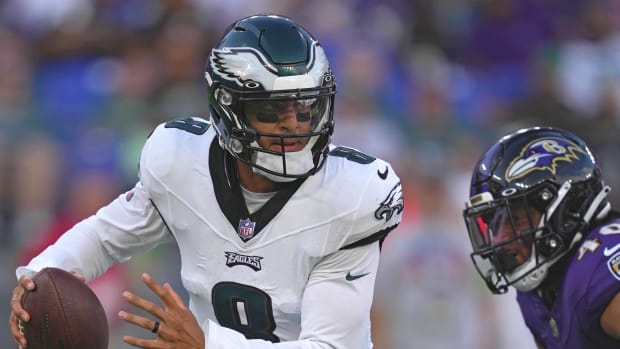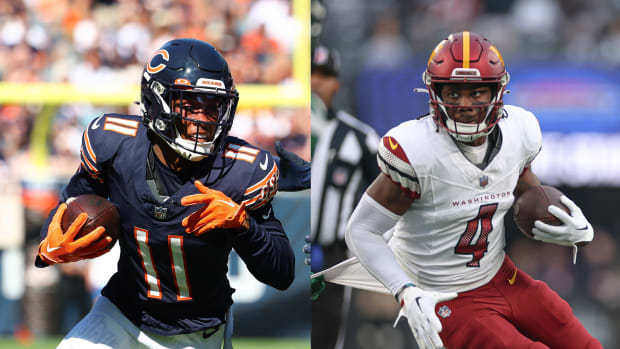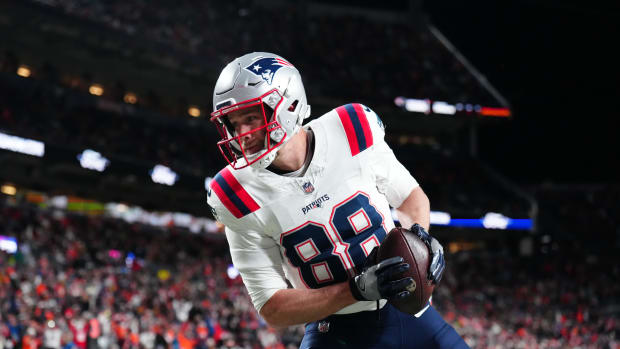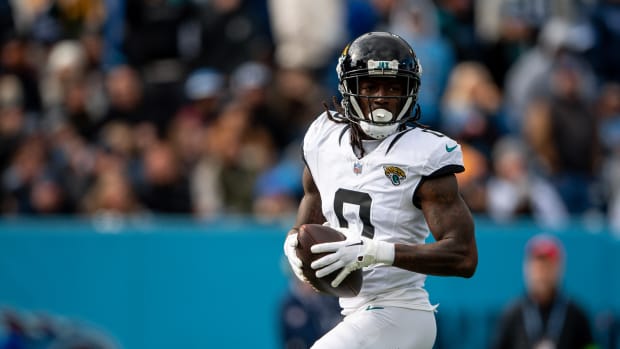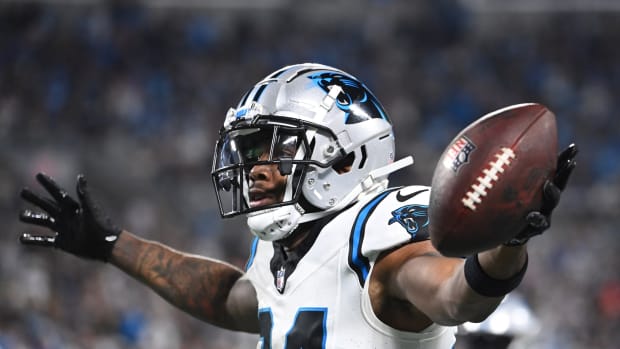
What Price Football?
New rules outlawing helmet-to-helmet hits have brought about complaints from players and fans alike. (Wesley Hitt/Getty Images)
They trumpeted it as a “settlement,’’ but of course the $765 million in restitution that the NFL has agreed to pay to former players to make those concussion-related lawsuits go away didn’t really settle everything. Certainly not the biggest question of all: will America’s love affair with football continue unchanged and unabated, now that we’re finally coming to grips with how much the game can ultimately cost some of its players?
In other words, what price football?
It’s not an easy question to grapple with, but given the stakes, it has to be done, and it has be done by everyone from couch potatoes to commissioners.
Now that we all know enough to know there’s hard evidence connecting football to traumatic brain injuries, and realize it’s a game that has been played far too dangerously for too long, there are new realities.
We have to let the game change, and we have to embrace that change. For the safety of the men who play the sport for our weekly entertainment, and for the preservation of the game itself.
Can football change? Will the sport become safer? How are concussions impacting the game’s future?
Introducing an in-depth series where we tackle those questions, starting at high schools and continuing into college and the NFL. Read the entire series.
The NFL is quick to point out it didn’t have to accept liability as part of its concussion litigation settlement with former players. But culpability is no longer the point, responsibility is, and the responsibility to make things right and to let football evolve into a safer game is something that every fan, media member, coach, player and team or league executive has a part in.
Where football goes from here depends on it.
Ignore the voices that resist change and cling to the way the game was played when they first learned it. The game has already changed in significant ways on the safety front in recent years, and it will continue to do so. Football isn’t being ruined by these changes, it’s being saved. At least hopefully, if they go far enough and work effectively.
Decide to see the wisdom of those changes, not just the flaws. Banning crown of the helmet blows in the open field is not a loss to the game, it’s a common sense move to protect the head and lower the amount of punishment it absorbs. Helmet to helmet hits aren’t to be argued and complained about by players, coaches and anyone who wants to paint them as unavoidable. Some perhaps are, but they’re dangerous and need to be eliminated as much as possible, like driving without a seat belt or running around in a lightning storm.
If the decision to remove the hazardous kickoff from the game comes along in the near future, let’s not whine about a cherished part of the game lost. If it makes the game safer, it makes sense. Case closed. Players will always say it’s too hard to change the way they play, but they can and will change the way they play, because it’s too important not to.
Worry less about new rules 'ruining' the game and more about the lives that have been ruined by the game.
Worry less about new rules “ruining’’ the game and more about the lives that have been ruined by the game, thanks to the effects of dementia, depression and suicides related to brain trauma. What we know about those issues today might wind up being just the tip of that scary iceberg.
The game of football should resist the notion that everything’s going to be fine. Record ratings, record profits, and wall-to-wall coverage are here today, but they’re not guaranteed indefinitely if the sport doesn’t keep taking steps to become less violent and less risky when it comes to long-term brain damage. It’s not a given that youth leaguers will continue to play in high school, taking their game to college and then the best of those into the professional ranks. Football needs a feeder system, but it needs one that doesn’t start to dry up due to fears of the game’s unintended consequences.
Change, even if it’s uncomfortable at first, must keep coming to the game of football. Nothing will ever make football 100 percent safe, but that doesn’t mean you don’t set the goal high and keep striving. It’s going to take more rule changes, better science and equipment, and increased emphasis and education when it comes to safety. And it’s going to take accepting that the change is for the better, and for the good of the game.
What price football? It’s a question that needs to be asked by everyone who has a sporting interest in the game America loves, and for all those who understand the need to protect the players of today better than the players of the past. If we learn to live with a game that features fewer devastating hits but helps secure football’s long-term future, it won’t be just the players who will feel the lasting impact.



































